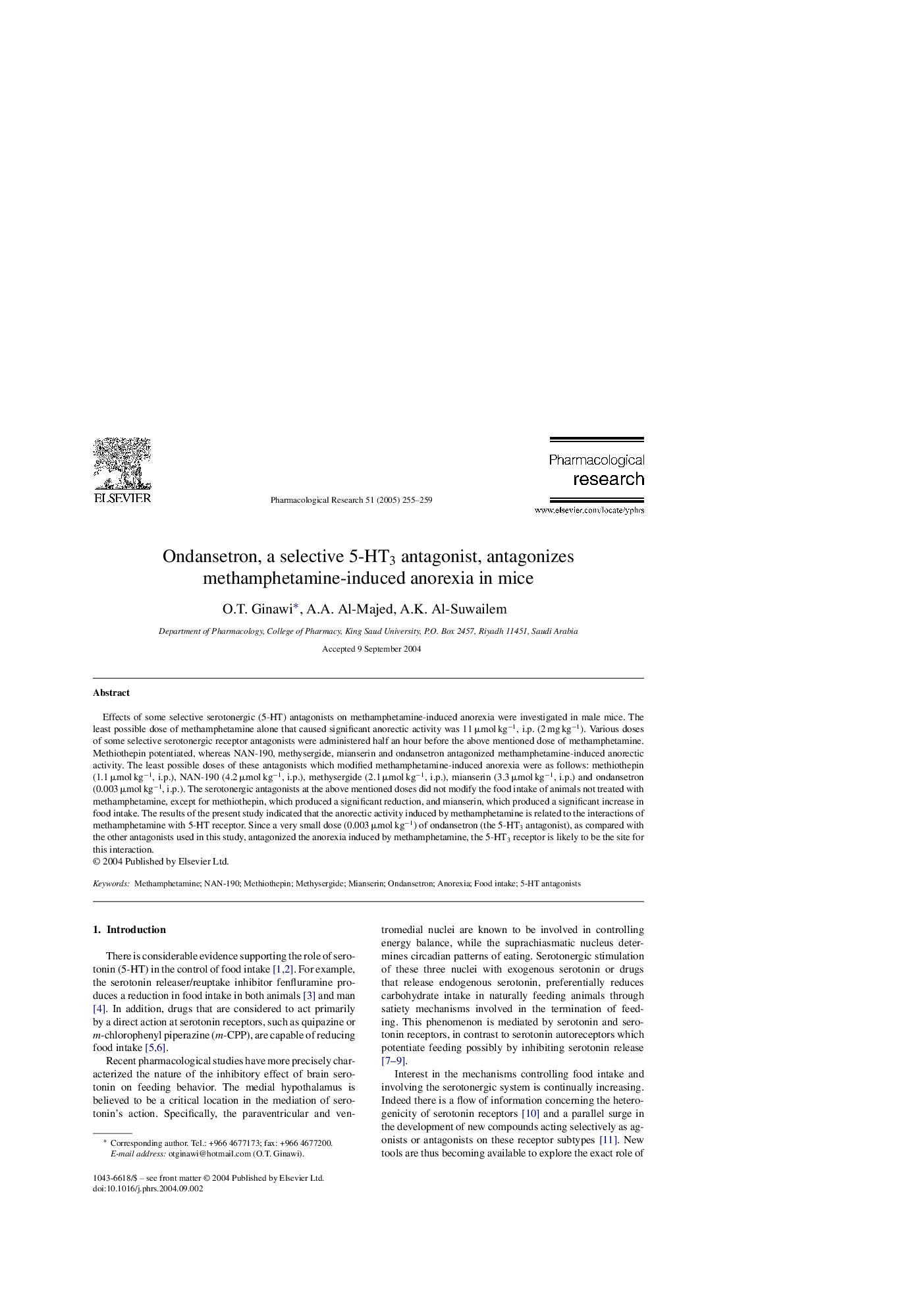| Article ID | Journal | Published Year | Pages | File Type |
|---|---|---|---|---|
| 9015366 | Pharmacological Research | 2005 | 5 Pages |
Abstract
Effects of some selective serotonergic (5-HT) antagonists on methamphetamine-induced anorexia were investigated in male mice. The least possible dose of methamphetamine alone that caused significant anorectic activity was 11 μmol kgâ1, i.p. (2 mg kgâ1). Various doses of some selective serotonergic receptor antagonists were administered half an hour before the above mentioned dose of methamphetamine. Methiothepin potentiated, whereas NAN-190, methysergide, mianserin and ondansetron antagonized methamphetamine-induced anorectic activity. The least possible doses of these antagonists which modified methamphetamine-induced anorexia were as follows: methiothepin (1.1 μmol kgâ1, i.p.), NAN-190 (4.2 μmol kgâ1, i.p.), methysergide (2.1 μmol kgâ1, i.p.), mianserin (3.3 μmol kgâ1, i.p.) and ondansetron (0.003 μmol kgâ1, i.p.). The serotonergic antagonists at the above mentioned doses did not modify the food intake of animals not treated with methamphetamine, except for methiothepin, which produced a significant reduction, and mianserin, which produced a significant increase in food intake. The results of the present study indicated that the anorectic activity induced by methamphetamine is related to the interactions of methamphetamine with 5-HT receptor. Since a very small dose (0.003 μmol kgâ1) of ondansetron (the 5-HT3 antagonist), as compared with the other antagonists used in this study, antagonized the anorexia induced by methamphetamine, the 5-HT3 receptor is likely to be the site for this interaction.
Keywords
Related Topics
Health Sciences
Pharmacology, Toxicology and Pharmaceutical Science
Pharmacology
Authors
O.T. Ginawi, A.A. Al-Majed, A.K. Al-Suwailem,
